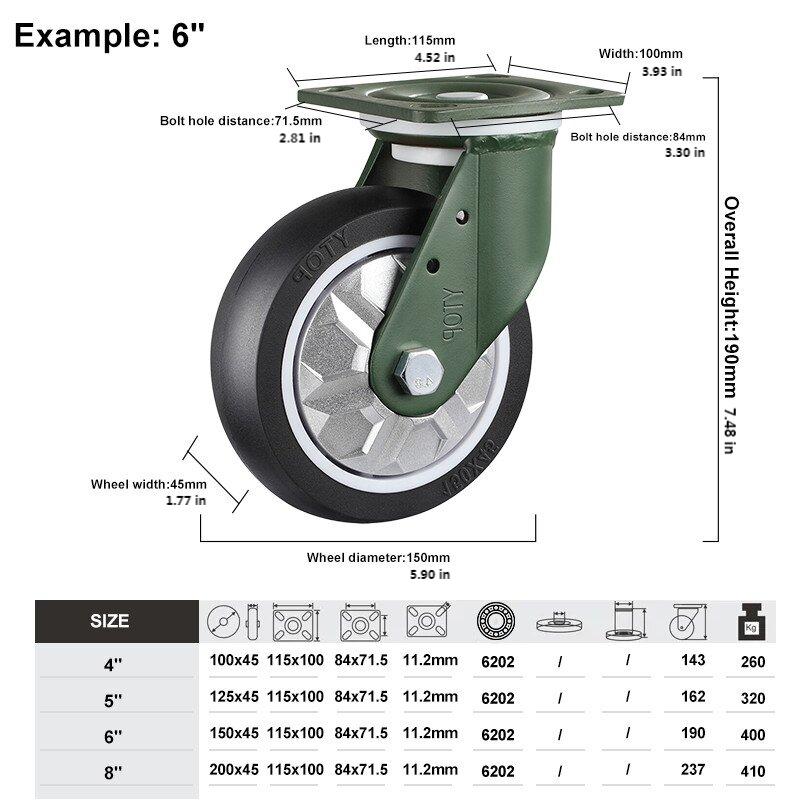Have you ever thought of buying casters and felt confused because you don’t know how to choose the right specification? Caster specification refers to the size, load capacity, material and other parameters of the caster, and choosing the right specification is very important for the effectiveness of the caster. Today, we will discuss caster specifications in depth, hoping to help you better understand the selection and use of casters.
The size of a caster usually consists of parameters such as diameter, width, and bearing hole diameter. Diameter refers to the circular diameter of the bottom of the caster, the larger the diameter, the smaller the resistance when the caster rolls, the greater the load-bearing capacity. Width refers to the width of the bottom of the caster, the larger the width, the better the stability of the caster to carry objects. Bearing hole diameter is the diameter of the center shaft of the caster, which is usually used for fixing on the equipment. Choosing the right size casters can be determined according to the specific use of the scene and demand, such as the need to frequently move the shelves can choose a large diameter, moderate width casters, in order to facilitate the movement and carrying heavy objects.
The load-bearing capacity of casters depends on the material and structure, and is usually categorized into a variety of load-bearing grades, such as light, medium and heavy. Light casters are suitable for lighter objects, such as office chairs, small furniture, etc. Medium casters are suitable for medium-weight objects, such as shelves, tool carts, etc. Heavy casters are suitable for heavier objects, such as mechanical equipment and industrial machinery. Choosing casters with appropriate load-bearing capacity can ensure the safe transportation and use of equipment and goods.
Post time: Jul-08-2024


